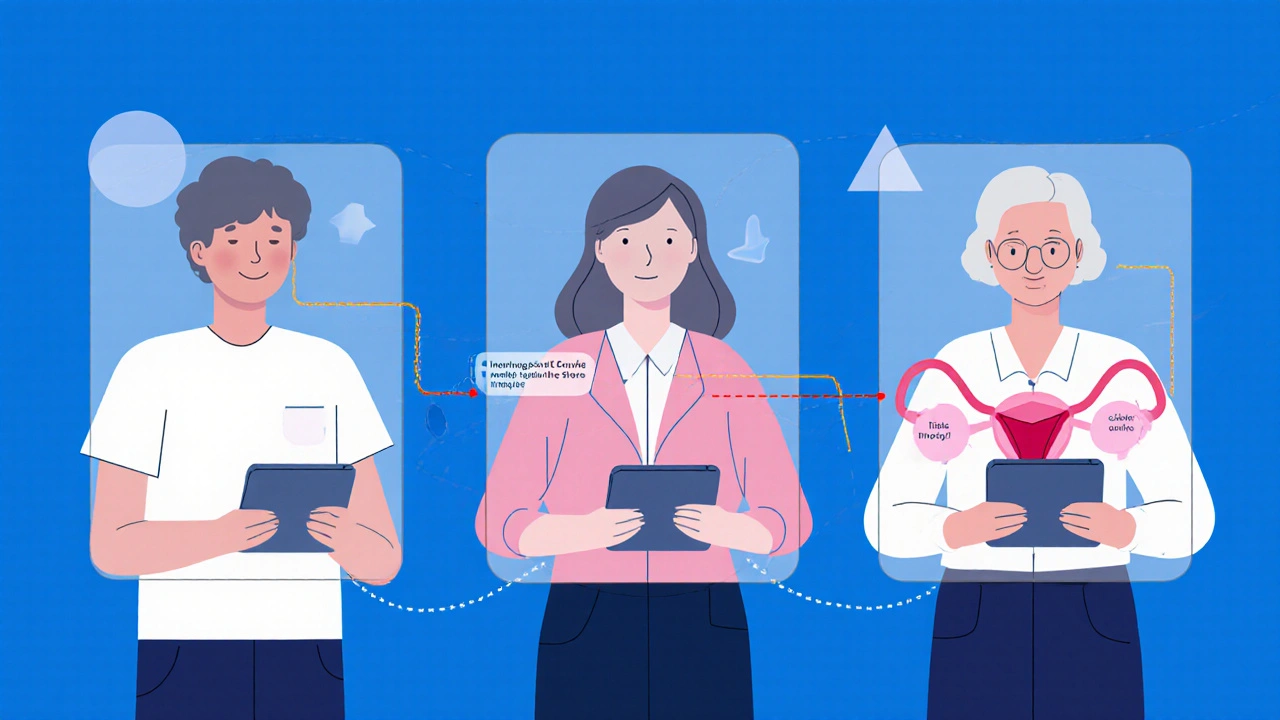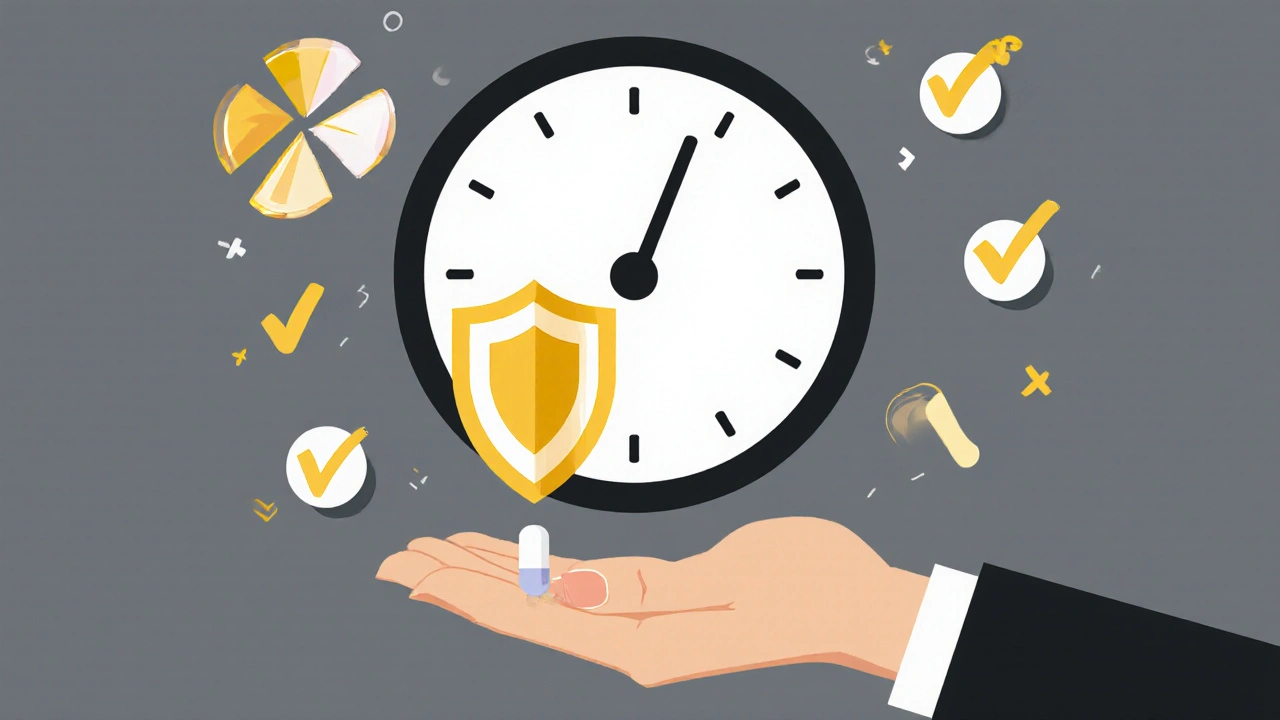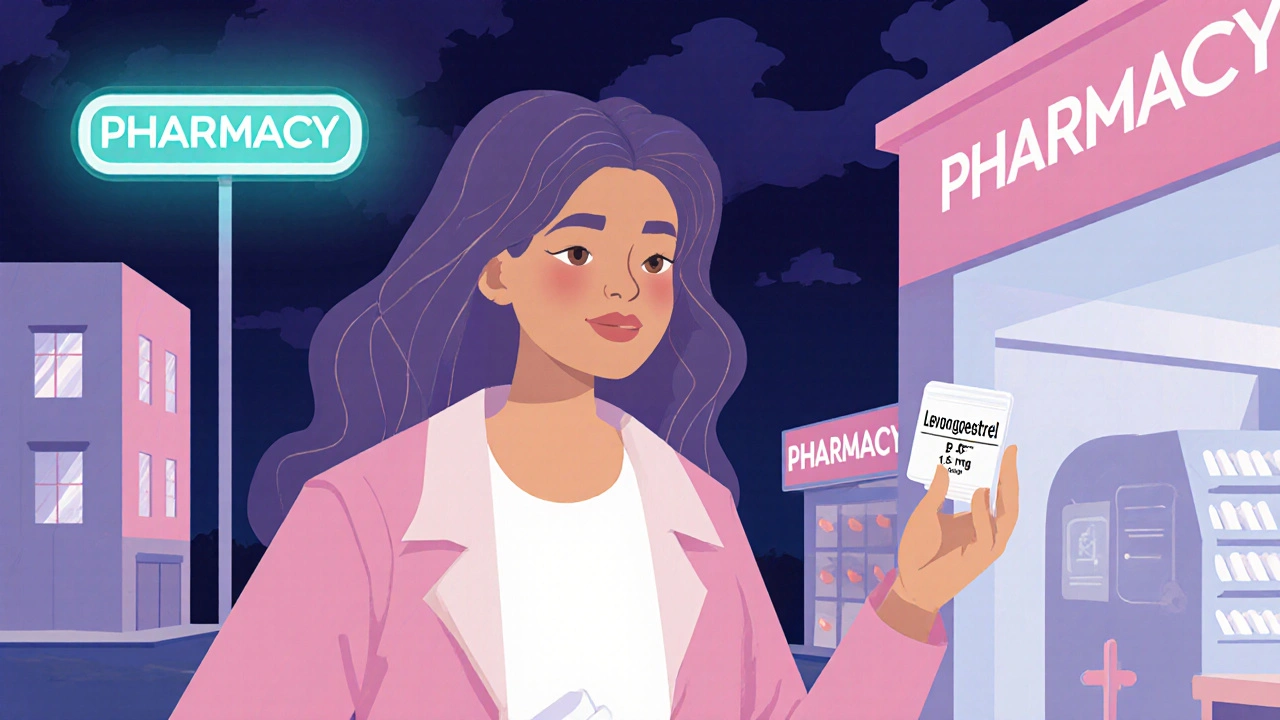Every year, millions of women face unexpected situations where they need to prevent pregnancy after unprotected sex or birth control failure. For many, the solution comes in a small tablet containing levonorgestrel BP-a hormone that can stop ovulation, prevent fertilization, or stop a fertilized egg from attaching to the uterus. Unlike older methods that required a doctor’s visit or prescription, levonorgestrel BP is now available over the counter in most countries, giving women immediate, private, and reliable control over their reproductive choices.
What Exactly Is Levonorgestrel BP?
Levonorgestrel BP stands for Levonorgestrel, British Pharmacopoeia. The "BP" means it meets the strict quality and purity standards set by the British Pharmacopoeia, one of the most respected drug quality authorities in the world. This isn’t just any hormone-it’s a synthetic version of progesterone, a natural hormone in a woman’s body that regulates the menstrual cycle and pregnancy.
Levonorgestrel BP works in three main ways:
- It delays or stops ovulation-the release of an egg from the ovary.
- It thickens cervical mucus, making it harder for sperm to reach the egg.
- It may thin the lining of the uterus, making it less likely for a fertilized egg to implant.
Importantly, it does not terminate an existing pregnancy. If a woman is already pregnant, levonorgestrel BP has no effect. This is a key point many people misunderstand. It’s not an abortion pill. It’s a preventive measure taken before pregnancy begins.
How Effective Is It?
When taken within 72 hours after unprotected sex, levonorgestrel BP reduces the risk of pregnancy by up to 89%. If taken within the first 24 hours, effectiveness jumps to about 95%. The sooner it’s taken, the better it works. After 72 hours, its effectiveness drops sharply, and it’s no longer recommended.
A 2023 study published in the Journal of Obstetrics and Gynaecology tracked over 12,000 women who used levonorgestrel BP as emergency contraception. The results showed that 92% of those who took it within 12 hours did not become pregnant. For those who waited beyond 48 hours, the success rate fell to 68%.
It’s not 100% effective, and it’s not meant to replace regular birth control. But for moments when things go wrong-a broken condom, missed pills, or forced sex-it’s one of the most accessible tools a woman has.
Why BP Matters: Quality and Safety
Not all levonorgestrel products are created equal. Some brands sold online or in unregulated markets may contain incorrect doses, fillers, or even harmful additives. That’s why "BP" matters. The British Pharmacopoeia requires manufacturers to prove:
- The exact amount of levonorgestrel in each tablet (typically 1.5 mg)
- That the tablet dissolves properly in the body
- That it’s free from contaminants like heavy metals or bacteria
- That it remains stable under different temperatures and humidity levels
When you buy levonorgestrel BP, you’re getting a product tested and verified by independent labs. You’re not guessing whether it will work. You know it will, because it meets global standards.

How to Use It Correctly
Using levonorgestrel BP is simple, but timing and technique matter.
- Take one tablet as soon as possible after unprotected sex. No food or water is needed, but taking it with a light snack can help reduce nausea.
- Do not take more than one dose unless instructed by a doctor. Taking extra pills won’t make it more effective-it just increases side effects.
- It’s safe to use more than once in a cycle, but it’s not meant for regular use. Frequent use can disrupt your period and isn’t as reliable as daily birth control methods.
- After taking it, your next period may come earlier or later than expected. If it’s more than a week late, take a pregnancy test.
Side effects are usually mild: nausea (about 20% of users), headaches, dizziness, breast tenderness, or spotting. These usually go away within a day or two. If vomiting happens within two hours of taking the pill, contact a pharmacist or doctor-you may need another dose.
Who Can Use It?
Levonorgestrel BP is safe for nearly all women, regardless of age, weight, or medical history. Unlike some other forms of birth control, it doesn’t increase the risk of blood clots, heart attacks, or strokes. Women with diabetes, high blood pressure, liver disease, or a history of breast cancer can still use it safely.
It’s also safe to use while breastfeeding. The hormone doesn’t pass into breast milk in significant amounts, and studies show no effect on milk supply or infant health.
The only people who should avoid it are those with a known allergy to levonorgestrel or any of the tablet’s inactive ingredients. Even then, alternatives like ulipristal acetate or the copper IUD are available.
Why This Changes Everything for Women
Before levonorgestrel BP became widely available, women had to rush to clinics, face judgment, or wait days for a prescription. Many couldn’t access it in time. In rural areas, in low-income communities, or in countries with restrictive laws, emergency contraception was often out of reach.
Now, women can walk into any pharmacy, ask for it without a prescription, and leave with a life-changing option in their hand. No forms. No questions. No shame.
This isn’t just about convenience. It’s about dignity. It’s about giving women the power to make decisions about their bodies without needing permission from someone else. Whether she’s a student, a working mother, or someone recovering from assault, levonorgestrel BP gives her back control when she needs it most.

What Comes After?
Levonorgestrel BP is a safety net, not a long-term solution. After using it, women should consider starting a regular birth control method if they’re sexually active. Options include:
- Combined oral contraceptives (the pill)
- Progestin-only pills (mini-pill)
- Contraceptive patches or rings
- Long-acting methods like IUDs or implants
Many clinics offer free or low-cost counseling and prescriptions after emergency contraception use. Talk to a pharmacist or healthcare provider about what fits your lifestyle.
Also, remember: levonorgestrel BP does not protect against sexually transmitted infections. If there’s any risk of STIs, get tested. Your reproductive health includes more than just pregnancy prevention.
Myths vs. Facts
There’s a lot of misinformation out there. Let’s clear it up:
- Myth: It causes abortion. Fact: It prevents pregnancy before it starts. It doesn’t affect an existing pregnancy.
- Myth: It’s only for young women. Fact: Any woman of reproductive age can use it, including those over 40.
- Myth: It makes you infertile. Fact: It has no lasting effect on fertility. Your cycle returns to normal within weeks.
- Myth: You need to be over 18 to buy it. Fact: In most countries, it’s available to anyone, regardless of age.
- Myth: It’s dangerous if used more than once. Fact: It’s safe to use multiple times, but it’s less effective than regular birth control.
Where to Find It
Levonorgestrel BP is available without a prescription in pharmacies across the U.S., Canada, the U.K., Australia, the EU, and many other countries. Look for brands like Plan B One-Step, Next Choice, My Way, or generic versions labeled "Levonorgestrel BP 1.5 mg."
Some pharmacies offer it behind the counter-you may need to ask the pharmacist. In some places, it’s even available in vending machines at university health centers or community clinics.
If you’re unsure where to find it, call your local pharmacy ahead of time. Most will confirm stock and availability over the phone.
How soon after unprotected sex should I take levonorgestrel BP?
Take it as soon as possible-ideally within 12 hours. It works best in the first 24 hours, and effectiveness drops significantly after 48 hours. It’s still somewhat effective up to 72 hours, but waiting that long is not recommended.
Can I use levonorgestrel BP as my regular birth control?
No. It’s designed for emergencies only. Using it regularly is less effective than daily birth control methods and can cause irregular periods, nausea, or spotting. If you’re sexually active, talk to a healthcare provider about long-term options like the pill, IUD, or implant.
Does levonorgestrel BP work if I’m overweight?
Studies show that effectiveness may be slightly reduced in women with a BMI over 30, but it still works for most. If your BMI is above 35, the copper IUD is a more reliable emergency option. Still, levonorgestrel BP is better than nothing-even if less effective, it reduces pregnancy risk.
Can I take levonorgestrel BP while on other medications?
Some medications can reduce its effectiveness, including certain epilepsy drugs (like carbamazepine), tuberculosis treatments (rifampin), and St. John’s Wort. If you’re on any prescription or herbal meds, check with a pharmacist before taking it. In those cases, the copper IUD is the best alternative.
What if I vomit after taking it?
If you vomit within two hours of taking the pill, it may not have been absorbed. Contact a pharmacist or doctor-they may advise you to take another dose. If vomiting happens after two hours, the pill has likely worked.
Will levonorgestrel BP affect my future fertility?
No. It doesn’t damage your ovaries, uterus, or hormones long-term. Your cycle should return to normal within a few weeks. Many women conceive in the next cycle after using it. It’s a temporary intervention, not a permanent change.
Levonorgestrel BP isn’t magic. It doesn’t fix broken systems or erase inequality. But in a world where reproductive rights are still contested, it’s one of the clearest tools women have to act on their own behalf. It doesn’t ask for permission. It doesn’t wait for approval. It simply works-when you need it, where you are, and how you need it. That’s power.


Keerthi Kumar
Levonorgestrel BP isn’t just a pill-it’s a quiet revolution in a world that still tries to dictate what women can do with their bodies. I’ve seen women in rural India walk miles to a pharmacy, only to be turned away because the pharmacist didn’t believe they were ‘responsible’ enough. This medication, with its BP seal, is dignity in a tablet. It doesn’t ask for your marital status, your income, or your moral alignment. It just works. And that’s radical.